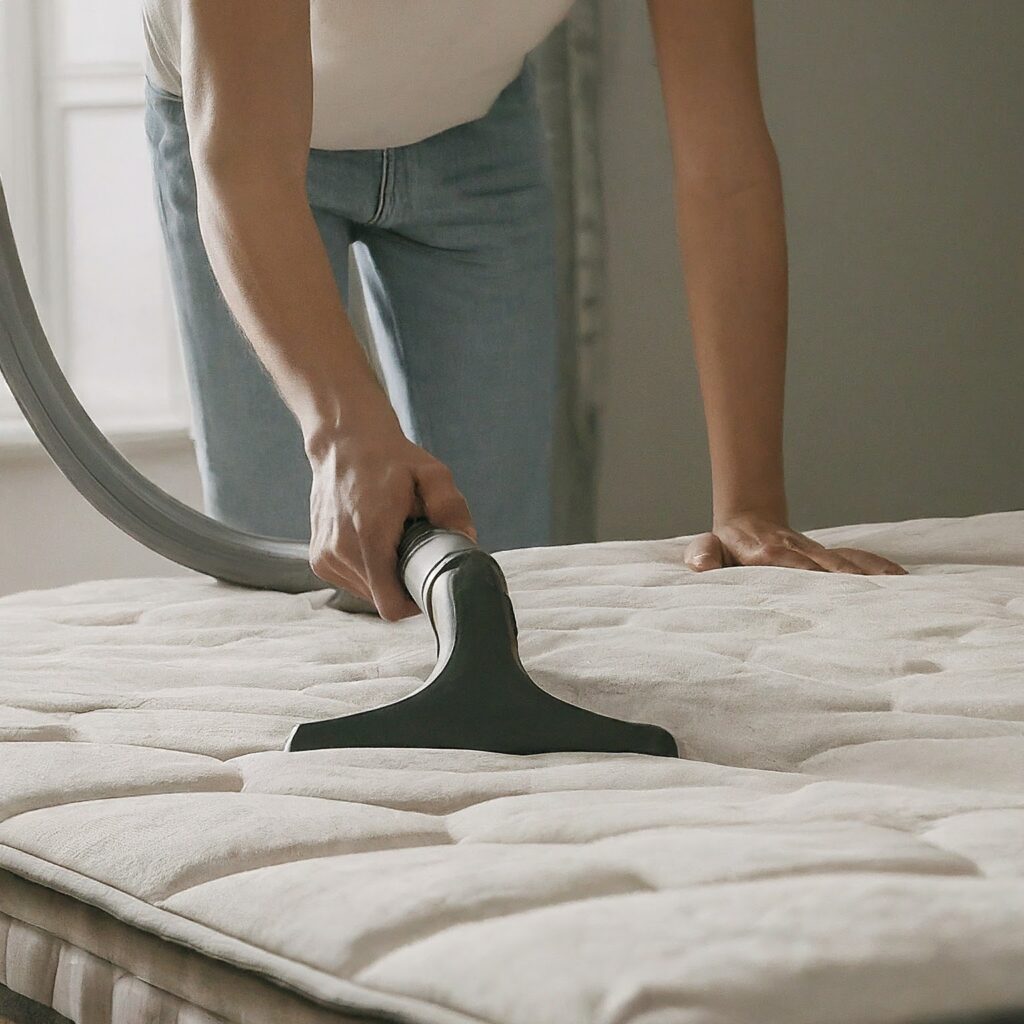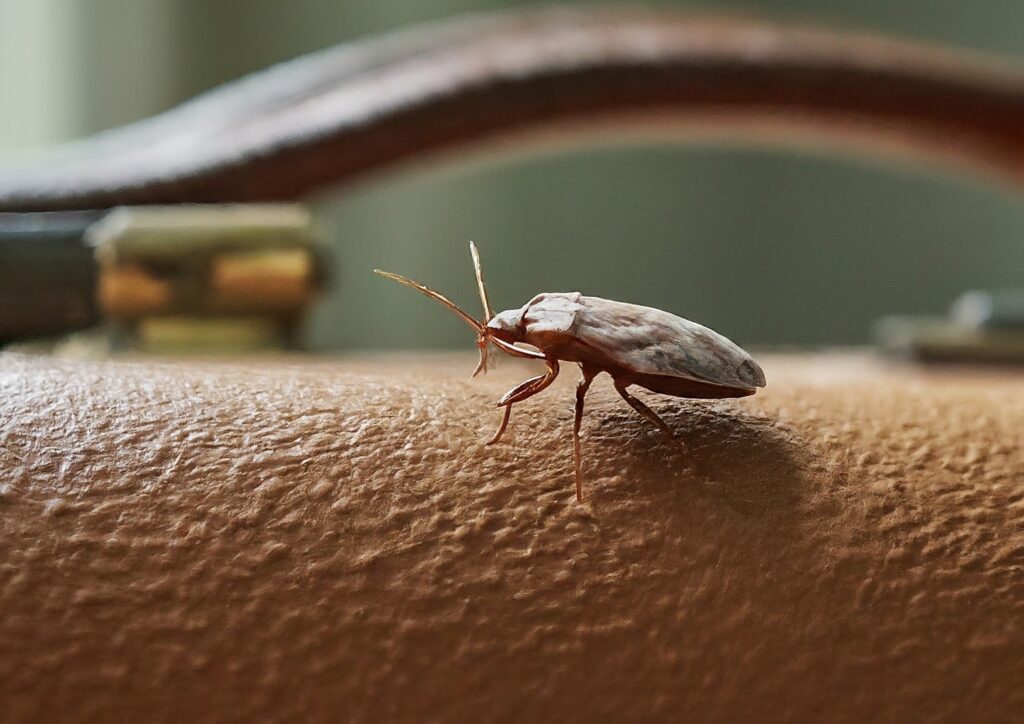Bed bugs—just the thought of them is enough to make your skin itch. These tiny pests don’t discriminate. Whether you’re living in a bustling city or a quiet village, they can find their way into any home, no matter how clean or tidy it is. And once they’re in, getting rid of them is no small task.
But here’s the good news: with a bit of vigilance and a few simple precautions, you can stop bed bugs in their tracks before they become a problem. At Thermopest, we’ve helped countless homes avoid full-blown infestations by sticking to the basics of prevention. Let’s walk through some practical steps to keep bed bugs far away from your home.

How Do Bed Bugs Spread?
Before we jump into prevention, it helps to understand how bed bugs move around. These little critters are expert hitchhikers. They can latch onto your clothes, luggage, or even second-hand furniture, travelling with you from place to place. Once they’re inside, they’ll make themselves at home in your bed, furniture, and other cosy spots.
Bed Bug Behaviour
Bed bugs love dark, tight spaces. During the day, they hide in cracks, seams, and crevices—places you’d never think to check. At night, they come out to feed, which is why most people only realise they’ve got a bed bug problem when they start waking up with itchy bites.
Preventing Bed Bugs While Travelling
If you’re someone who loves to travel, you’re more at risk of accidentally bringing bed bugs home with you. Hotels, hostels, and even high-end resorts can harbour bed bugs. So, what can you do to avoid taking these unwanted guests home?
Inspect Your Hotel Room
- When you arrive at your hotel or Airbnb, don’t just throw your suitcase on the bed.
- Take a few minutes to inspect the room.
- Pull back the bed sheets and check the seams of the mattress for small black spots (which could be bed bug faeces).
- Look around the bed frame, behind the headboard, and in any upholstered furniture.
Keep Your Luggage Safe
- Always use the luggage rack and keep your bags off the floor.
- Bed bugs can crawl into your suitcase if it’s too close to infested areas.
- Consider investing in protective luggage covers to add an extra layer of defence.
Clean Everything After Your Trip
- When you return home, don’t drag your suitcase into the bedroom straight away.
- Unpack your clothes directly into the washing machine and run them on the hottest cycle possible.
- Bed bugs and their eggs can’t survive high temperatures, so this step is crucial.
- It’s a simple habit that can save you a lot of trouble later on.
How to Prevent Bed Bugs in Your Home
Even if you’re careful while travelling, bed bugs can still find their way into your home. But with a few preventive measures, you can minimise the risk.
Regular Home Inspections
- Make it a habit to inspect your bed and furniture regularly.
- Check the seams of your mattress, around the bed frame, and any upholstered furniture in your home.
- Bed bugs leave behind tiny black spots, shed skins, and sometimes a musty odour.
- Spotting these signs early can stop a small issue from becoming a major infestation.
Use Bed Bug-Proof Mattress Covers
- Protect your bed with a bed bug-proof mattress cover that zips around your mattress.
- These covers prevent bed bugs from getting in or out, even if they find their way into your home.
Keep Your Home Clutter-Free
- Bed bugs love clutter.
- The more items lying around, the more hiding spots they have.
- Keep your spaces organised, especially in bedrooms and living rooms.
- Decluttering also makes it easier to spot early signs of bed bugs.
Vacuum and Clean Regularly
- Regular vacuuming around your bed and furniture can help remove any stray bed bugs.
- Be sure to empty the vacuum bag into a sealed plastic bag and dispose of it outside your home to prevent any bugs from escaping back into your space.
Second-Hand Furniture: A Bed Bug’s Best Friend
We all love a good bargain, but second-hand furniture can sometimes come with an unwanted surprise—bed bugs. Whether it’s a vintage sofa or a preloved armchair, used furniture can be a bed bug haven.
Inspect Before You Buy
- Before bringing any second-hand furniture into your home, inspect it thoroughly.
- Look at the seams, cushions, and any cracks or crevices.
- Use a flashlight to check for signs of bed bugs, like black spots or tiny white eggs.
- If something seems off, it’s better to walk away.
Clean and Treat Second-Hand Items
- Even if a piece looks clean, it’s always smart to treat it before bringing it inside.
- Use a steam cleaner or bed bug spray to treat the furniture, and keep it isolated in your garage or another area until you’re sure it’s safe.
Isolate New Purchases
- If you’re unsure about a new piece of furniture, try to keep it isolated for a few days and monitor it for signs of bed bugs.
- A little patience goes a long way in preventing an infestation.
Protecting Shared Spaces from Bed Bugs
If you live in a block of flats or a shared building, bed bugs can spread more easily through shared spaces like hallways, laundry rooms, or even through the walls.
Work Together with Neighbours
- If you suspect bed bugs in your building, talk to your neighbours or landlord.
- Bed bugs can move between flats through tiny gaps in walls or vents, so it’s essential to tackle the problem together to stop it spreading.
Use Bed Bug Monitors
- Consider using bed bug monitors or traps in your home.
- These small devices can be placed under bed legs or around furniture to catch bed bugs before they get out of hand.
- They’re especially useful in shared living spaces, where infestations can spread unnoticed.
What to Do If You Suspect Bed Bugs
If you’ve followed all the preventive steps but still suspect bed bugs have made their way in, don’t panic. Here’s what to do next:
Recognise the Signs
- Common signs of bed bugs include itchy red bites (often in clusters or lines), small blood spots on your sheets, and tiny black faecal spots on your mattress or furniture.
- If you spot any of these signs, it’s time to take action.
Quarantine the Area
- If you suspect bed bugs in a particular area, don’t move things around too much—this could spread the infestation.
- Quarantine the area by stripping your bed and sealing the bedding in plastic bags until you can wash and treat everything.
Call a Professional
- While DIY methods can sometimes help in the early stages, bed bugs are tough to get rid of without professional help.
- At Thermopest, we specialise in thorough bed bug treatments that eliminate the problem for good.
Long-Term Bed Bug Prevention
Once you’ve dealt with bed bugs—or better yet, managed to avoid them entirely—it’s important to stay vigilant.
Regular Home Inspections
- Even after treating your home or returning from a trip, make regular inspections part of your routine.
- The earlier you catch bed bugs, the easier they are to deal with.
Educate Family Members
- Make sure everyone in your home knows the signs of bed bugs and what to do if they suspect an issue.
- Prevention is always easier when everyone’s on the same page.
Stay Vigilant After Travel
A little caution can save you a lot of hassle later on.
Whenever you return from a trip or bring new items into your home, take a few minutes to check for bed bugs.

Final Thoughts: Keep Bed Bugs at Bay
Preventing bed bugs doesn’t have to be complicated. By being proactive, staying organised, and regularly inspecting your home, you can protect yourself from these pests. And if you ever do find yourself dealing with a bed bug problem, Thermopest is here to help. We’re just a call away, ready to help you keep your home pest-free.
